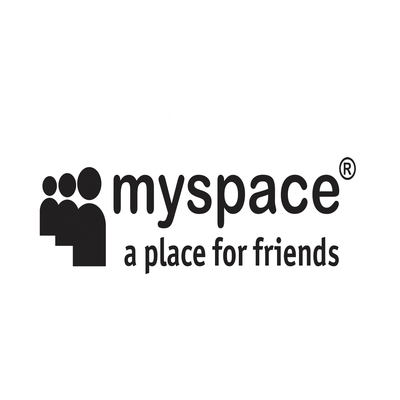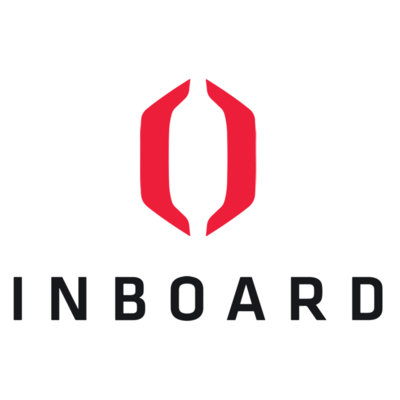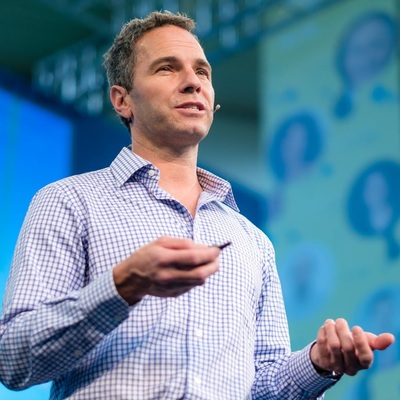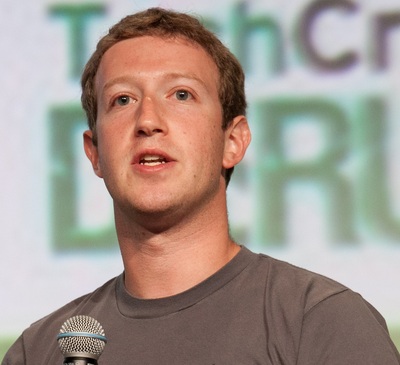What is Myspace?
Myspace was the OG social media platform that first earned as much global reach as social media companies today are known for.
Like Facebook, Myspace was a simple social networking website. People could create their own “myspace page” and interact with other members on the website.
The Myspace page offered anonymity, a core feature of the early Internet era, where users were encouraged to create profiles with random names.
You could do a lot with a simple Myspace account:
- You could create personalized blogs, post pictures, videos, wallpapers, etc
- There were also chatrooms, forums, and newsgroups for people to connect on shared interests.
- Myspace was THE platform for Music lovers. During the era of illegal music downloads via Napster, Myspace made sophisticated contracts with Record Labels. So, users could directly listen to music on the platform.
Altogether, in the late 2000s and early 2010s, Myspace was the place to be on the internet!
The origin of Myspace!
Myspace was the first social media site to gain crazy global reach. But it was not the first successful social networking site to emerge on the internet. That was Friendster. Now, Malaysia-based Friendster saw its demise soon enough, but it inspired the birth of Myspace!
Back in 2003, four eUniverse employees, Chris DeWolfe, Josh Berman, Tom Anderson, and Brad Greenspan, in Los Angeles were frequent Friendster users. They saw the potential in Friendster’s social networking feature, so they decided to mimic it. They built version 1 of Myspace using Adobe’s ColdFusion in just 10 days.
eUniverse employees became Myspace’s very first users and they were the ones tasked to get more sign-ups. eUniverse used its 20M email subscribers to push Myspace to the top of the social networking pyramid. And, everything they did 100 per cent worked!
Soon enough the team knew, they had struck gold with Myspace!
Acquisition and Peak Era
Myspace from the very beginning was an absolute HIT.
- Within a month, the site gained 1 million users.
- In just 9 months, they were at 5 million users.
These numbers all sound great, but, what about the goal of making money? Well, the founding team of Myspace had the perfect answer for that.
Seeing as social media was a new business, in a pitch meeting with an investor, Tom Andersson described why Myspace was the perfect business:
A) NO content generation cost — the users themselves create content on the app for free.
B) NO user acquisition cost — the users already on the platform would gladly spread the word and invite their friends on Myspace.
C) Endless advertising revenue — Since the social network ecosystem thrived all on its own, advertisers could simply display ads on the platform, pocketing Myspace with endless cash.
In July 2005, News Corporation (a.k.a Fox) decided to buy Myspace for $580M beating a huge competitor, Viacom, to the deal.
Fun fact: the person in-charge to acquire Myspace for one of the companies bidding for the startup was fired when the deal didn’t go through for them. So, clearly, everybody wanted a piece of Myspace.
Very quickly, Myspace was making $30M per month in 2005. At its peak in 2007, Myspace reached $800M in revenue and 22M users with a $12B valuation.
The decline: Facebook VS Myspace
Unfortunately, Myspace couldn’t hold the top social media seat for too long.
Facebook, a small startup, was trailing behind the behemoth that was Myspace in 2007. Myspace was ahead with an 80% market share of all social networking traffic, while Facebook’s traffic was 10 times less than Myspace’s traffic.
At one point, the traffic on Myspace even surpassed that on Google!
So, early on, knowing very well that beating this social media giant would be an impossible task, Zuckerberg offered to sell Facebook to Myspace for $75M. But, Myspace (aka NewsCorp) declined the offer.
But, both Facebook and Myspace’s fate was about to change in 2008! In a sudden upsurge, Facebook caught up and surpassed Myspace’s users.
Why did Myspace fail?
At its peak, Myspace was envisioned as the future of the internet. NewsCorp was optimistic about its prospects, with Rupert Murdoch (NewsCorp CEO) unabashedly announcing Myspace would make $1 billion in revenue in the fiscal year of 2008.
Although their numbers were strong, Myspace did not reach this goal. It started facing a descent. The decline was slow and negligible at first, but it was slipping. There were a few factors that made it unpopular among its user base.
Since Facebook benefitted the most from Myspace's decline, many people suggest that the giant failed because of Zuckerberg’s supposed wrath.
But, bear in mind, Myspace KILLED itself. Here’s how.
1) Advertisings EVERYWHERE!
NewsCorp is essentially a media company with no history or understanding of the nuances of how social media works. They saw Myspace as a cash cow to derive endless advertisement money. And, that strategy worked for a while.
Since Myspace’s primary source of revenue was from advertisements, they flooded the site with ads on every little surface you could find.
In 2006, Myspace also entered a $900 million 3-year advertising contract with Google. With this deal, Google was given exclusive rights to advertise and provide sponsored search results on the platform. This arguably worsened the advertisement problem, as they had no incentive to roll back their aggressive advertising measures.
More ads were thrown at the users, on top of an existing ad-heavy UI.
In 2008-09, Myspace built a book feature on its platform simply because Harper Collins paid them to. There wasn’t any prominent data indicating Myspace to be an online rendezvous for book lovers. It did not consider if people would actually use it, and still went ahead with it. Naturally, as a result, this venture tanked.
2) Too much clutter
The features on Myspace were quite endless!
Books, forums, movies, ringtones, celebrities, music, schools, chat rooms, horoscopes, sports, comedy, jobs — the startup was essentially running multiple social media companies on a very broken platform with 100M+ users.
For example, with features like jobs, music, and movies, Myspace was aiming to reach the glory of Spotify, Netflix, and LinkedIn. But, of course, that didn’t happen. Each of these segments are very complex businesses with its own set of rules and nuances. Aiming to include all of them at once was unwise, to say the least.
On top, the site was so cluttered that you’d be playing a game to decipher what is what on any given page. Let alone decide on what to do on the platform.
3) Bad website design and UI/UX
Visit any page on Myspace and you’ll start feeling the signs of sensory overload.
You see, people loved Myspace because it allowed for a lot of customisations. You could create your Myspace page by writing HTML. So, unlike Facebook, every page on Myspace looked unique and different. But, uniqueness is not always a good thing.
Since Myspace’s design was dependent on users, the platform had very little control over the overall look of the website. But, the parts they did have control over — navigation & UI/UX — they still messed it up.
4) Not a sound tech platform
Myspace was built on Adobe ColdFusion. But, considering how quickly Myspace grew, it had very easily surpassed the scope of what ColdFusion could handle.
With more resources and revenue after the acquisition, Myspace moved to a site built from scratch to support its scale, but the product turned out buggy, giving another reason for users to leave.
5) Offshoring building tools to developers
Now, Facebook had the advantage of a clean, sophisticated user interface. So, it could easily add more features on top of it to keep its happy users engaged.
It opened its platform to developers and asked them to create Facebook-based tools for platforms. From this strategy emerged many famous games and fun tools. And, more importantly, it saved Facebook the trouble of building tools to keep users engaged.
Myspace was very uncertain about this strategy. They wanted to control all parts of the platform to make sure it was tailored to all their advertiser's needs. They built every feature from scratch costing them money and effort that was eventually wasted.
6) Bad Reputation
There were absolutely no regulations or systems in place to handle the malpractices that could take place on social networking sites of Myspace’s scale.
Over the years, Myspace’s public image began deteriorating. It began facing bad PR due to cases of age-inappropriate content being exposed to underage minors. It also had an onslaught of legal battles due to cases of cyberbullying and harassment taking place over the platform.
7) Prioritized website over core service
In any social network website, the primary service being offered is the ability to socialize and build your network. A website is simply a tool or a means that allows you to provide the service. The socializing service is what the people really want.
Facebook did not lose sight of this objective. As a result, all of its website enhancements were very optimal and user-centric. Myspace, on the other hand, failed to understand this.
It failed to recognize what the consumer needs. Instead, they began assuming what the consumer wants and developed the site accordingly. With this flawed business foundation, users were completely turned off by Myspace. Which set out Facebook for victory!
8) Founders jumping ship
Myspace at its core was never a real company. It was simply an extension of a much larger media conglomerate.
- As time went on, the corporate guidelines crept in.
- Each decision had to be run through a series of lawyers, accountants, etc, with a long-term goal to meet target traffic and revenue.
With the acquisition, they lost their startup edge, that is their ability to take rapid, product-led decisions. The bottom line was ad revenue, and that’s all that mattered.
The founders, who after the acquisition were answerable to a higher authority in NewsCorp was entirely disillusioned by Myspace’s decline and left the company when the ship started sinking.
So, what happened to Myspace later?
Here’s how the rest of the story goes. Facebook and Myspace both reached 115M unique visitors. In May of 2009, Facebook surpassed Myspace in unique visitors and the whole thing crashed.
Myspace started losing $40M in unique visitors per month, lost both founders, laid off the vast majority of its staff, and more generally, has diminished to a cluttered afterthought of the power it once was.
In June 2011, a media group and Justin Timberlake jointly purchased Myspace for $35M, a considerable loss for NewsCorp.
Since then the company has been passed around several times. In 2016, Time purchased it for $87M while in 2018, it was sold again to Meredith Corp. In 2019, Meredith sold it to Vaint Technology LLC.
As for the website, Myspace is still active but it doesn’t hold the same influence or charm it once did. It is not entirely a ghost town, but it has stayed under the radar and has lost all of its relevance in popular culture.
What do we learn?
Well, the most obvious lesson for all social media companies and to that extent all entrepreneurs is quite simple — NOT all million-dollar acquisitions are GOOD for your startup!
Myspace clearly struck a chord with its users. It was loved during its time. But, its sole monetization effort and its approach to achieving that killed it.
Now, we must consider that all of Myspace’s lessons are very obvious in hindsight but were probably not so apparent back in 2008. I bet most executives were shocked to see its numbers slip.
Either way, it's still worth it to learn why Myspace failed and how social media platforms can escape the same fate.
💡 Lessons
- Your startup doesn't need to fail fast. It can succeed slow.
- Startup battles are regularly won by people who can run longer than those who can run faster.
- Startups not only require you to learn, but ALSO un-learn all the lies popular media has told you about building it.
- Don't try to solve for all problems at once. Figure the most critical ones & solve for them first. Iterate and solve for the rest in later versions.
- Software doesn't last forever. When you build something from scratch, don't expect it to run magically forever. Version upgrades, feature deprecation & other maintenance issues are bound to come up.
- Unless you realise that the absence of a certain feature has created a bottleneck in business outcome, it is surely an unnecessary feature.
- Startups are built by doing simple and "boring" things, consistently, over long periods of time.





.png)



